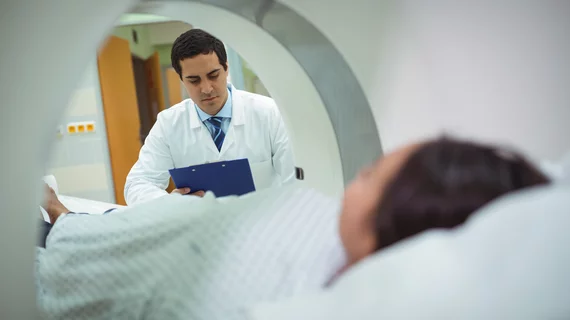Nuclear medicine leader calls on physicians to remain ‘vigilant’ patient-first imagers
As payers and benefits managers seek to standardize care and reduce costs, the leader of an influential nuclear medicine group is urging radiologists and other clinicians to ensure they maintain a patient-first approach to imaging.
Randall C. Thompson, MD, president of the American Society of Nuclear Cardiology, made his call in a message published last week by the organization’s Journal of Nuclear Cardiology. He noted insurance companies are using prior authorization requirements to steer cardiovascular imaging care toward cheaper options, infringing on physicians’ decision-making abilities.
In some cases, Thompson said campaigns are even promoting specific modalities as first-line tests for cardiovascular disease, such as the hashtag #CTFirst campaign. But high-quality, patient-centric care has to take priority.
“We must be vigilant to ensure that the patient is always at the center of our efforts, our attention, and our decision-making,” Thompson added in his president’s message on Feb. 28. “We must adhere to a principle of patient-first imaging and define ourselves as patient-first imagers.”
Ordering cardiovascular testing is nuanced, and clinicians must consider their organization, along with its experience and expertise with available options.
For example, at St. Luke’s Mid-America Heart Institute in Kansas City, Missouri, where Thompson practices, providers routinely add coronary artery calcium scoring to all diagnostic myocardial perfusion imaging exams. CAC metrics add value to functional testing that alternatives cannot in most cases, he explained.
Patient-directed imaging also evolves alongside technological advances, yet clinical trials rarely reflect the latest and greatest modalities. Thompson said this certainly hampers payers and guideline authors who are directing care.
PET quantitative myocardial blood flow, myocardial PET perfusion with digital camera detectors, and SPECT have all emerged as powerful tools in cardiovascular care. Each offers advantages over standard imaging tools, he noted, but few have been subject to imaging-comparison studies.
Every patient has different histories, symptoms, medical profiles and needs; no one individual comes standard, Thompson explained.
“With the current rate of technological advancement, simplified algorithms that aim for #ModalityFirst care, quickly become outdated,” he concluded. “#PatientFirst will stand the tests of time and technology.”

